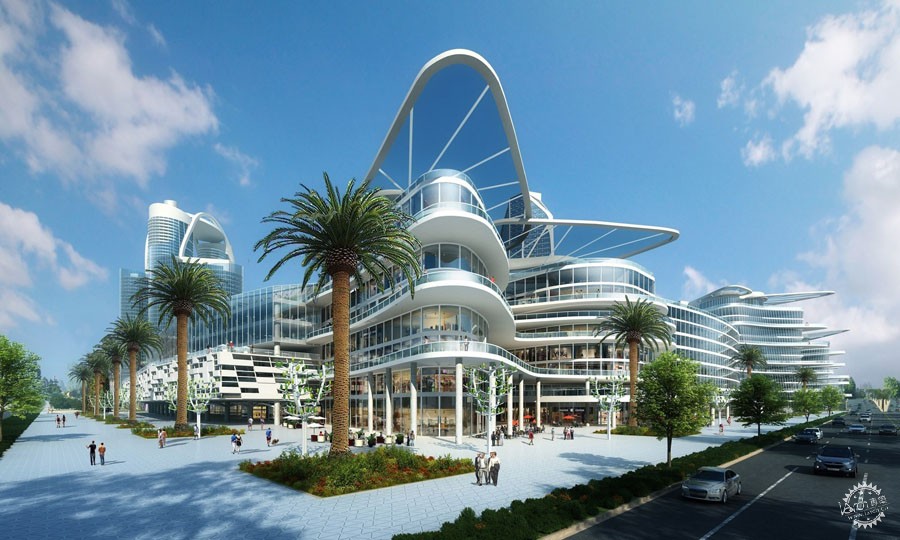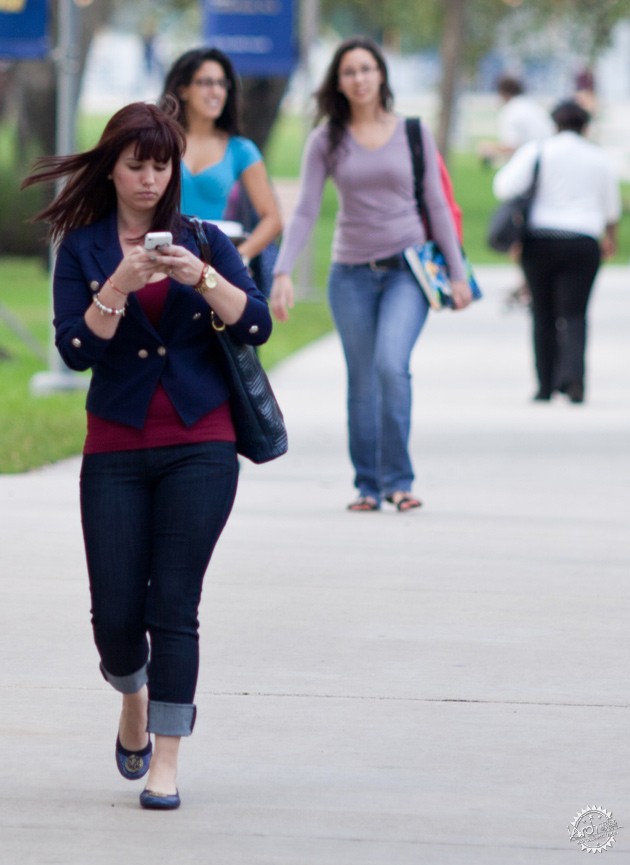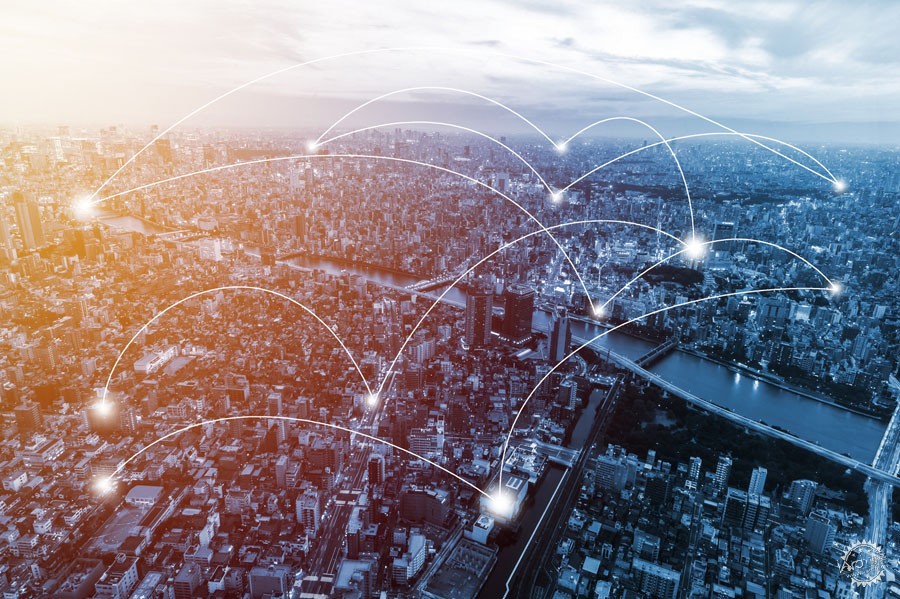
Image Courtesy of Bleutech Park Properties
Unexpected Ways Our Cities Are Becoming Smarter
由专筑网小R,王雪纯编译
各个城市都在发生着巨大的变化,新技术替代了旧技术,计算机视觉与实时分析技术的发展也促进着城市的智能发展。云技术给人们带来灵活的数据信息,甚至可以收集到车辆或是行人的各项数据。随着城市中多种技术的发展,诸如人工智能等现代化工具已经和城市融为一体,另外还包括无人机和机器人等前端技术,但是让城市更加智能的方式仍然还值得我们探索。
Cities across the globe are undergoing makeovers - swapping out old, antiquated technology for new, sleek alternatives. The development and implementation of computer vision and real-time analytics are ushering in the newest wave of smart cities. The combination of cloud-based dashboards and machine learning are providing actionable data to be collected and understood regarding everything from vehicle concentration to pedestrian activity. As cities continue to push forward and develop socially and technologically, there is no doubt we will continue to see cities incorporate tools like Artificial Intelligence (AI) to facilitate such changes. Despite the fact that eye-popping technologies like drones and robots are at the forefront of this technological revolution, there are also a number of unexpected ways cities are becoming smarter.
评估行人活动

© Eduardo Merille
了解行人在城市街道上的活动其实也能够让城市变得更加智能,城市规划者和零售商都想要了解行人的活动轨迹与规律,而人工智能的使用则让人们能够了解到事实信息。评估者能够看到行人的定位,行人出现于此的原因,以及他们停留的时间。那么这对于不断发展的城市来说至关重要,因为规划者能够根据这些信息来设定整体布局。但是,这项技术仅仅只用于相关的分析,并不记录个人信息。
另外,商家对于这些信息也很感兴趣,因为他们能够了解到这预期时间内客流量的大概数额,然后根据此来配备服务人员。
这项技术能够分析行人的路径和逗留时间,继而进一步地了解到行人的大致习惯,那么这些信息能够让城市的规划依次为标准,优化整体规划策略与运营方式。就传统而言,人们的活动流程常常被忽略,但是这其实是城市智能发展的重要组成部分。
EVALUATING PEDESTRIAN ACTIVITY
Perhaps the most unexpected way cities are becoming smarter is by learning the activity of pedestrians strolling the city streets. From the city planners to the retailers, everyone needs to have an understanding of where pedestrians are moving and why. The introduction of AI-supported heat maps gives real-time insights into just that. Users are able to learn where pedestrians are, why they’re there, and for how long. This is especially pertinent to understand how to change the layout of a city as it continues to grow and develop. And, for peace of mind, it’s important to point out that pedestrian data is only tracked for analytical analysis, not to keep a record of personal information.
Additionally, business owners are especially keen on this information, as it helps them understand how many people to expect at a given time, and how to staff storefronts accordingly.
The advanced analytics provide a deeper understanding of pedestrian habits by analyzing path tracking and dwell times. Such information allows for cities to benchmark pedestrian activity to optimize city planning and operations. While learning the flow of pedestrian activity is often overlooked, it actually represents a critical component to the development of smart cities.
汽车与自行车的追踪

KENTOH/ISTOCK
城市交通的信息追踪是十分有价值的方面,就交通而言,好像人们对它都有很多苦水要倾诉。但是如果利用技术来观察,其中也包含了许多有效信息。
配备无线数据传输体系的气象传感设备能够在无需附属设施的前提下进行数据的收集。因此,智能化城市能够有效地收集数据,从而了解社区的形成原因,这些数据不仅针对城市的规划布局,同时零售商也可以利用这些数据来决定店面和营业时间的设定。
专门的人工智能视频传感器能够跟踪汽车与自行车,然后通过高端的分析系统进行交通流量的检测,这样能够准确地定位某辆车在某个时间与地点的停留时间。而这些技术都以人工智能为基础,同时促进城市的智能发展。
TRACKING VEHICLES & BIKES
Honing into the flow of traffic can offer a lot of valuable information about a city. Seemingly one thing was true in terms of traffic: nobody likes it. However, leveraging technology to look beneath the surface, we are able to understand far more than the minor annoyance it represents.
The use of weatherized sensors equipped with wireless data transmission allows for the gathering of data without the need for any additional infrastructure. Now, smart cities have the ability to gather trend data to understand precisely how neighborhoods are emerging. Not only is this data useful to those planning city layouts, but retailers find this data incredibly helpful in deciding where to plant a storefront and set hours of operation.
Specialized AI-supported video sensors can track vehicle and bicycle traffic, delivering extractable metrics. Gauging the flow of traffic through advanced analytics highlight exactly how long vehicles pause in a location. The extracted video insights allow for the development of smart city applications, rooted in AI and machine learning.
交通信号灯数据的收集

© Pushish Images / Shutterstock
城市愈发智能的另一个策略是交通信号灯数据的收集,这是一种量化的方式,能够有效地提高交通安全性。随着城市的智能化发展,城市的可达性越来越大,如何高效地提高车辆与行人的安全性就成了一个问题,交通信号灯数据的收集能够改善城市的安全化发展趋势。
通过人工智能来获取实时交通数据,能够明确一些概念化信息,而这些信息则能够有效地保障行人与车辆的出行安全。
美国曾连续三年每年至少有4万人丧生于道路交通事故,而2018年的交通事故死亡人数又再创新高,大约为7000人,证据表明,开车其实是一种危险系数较高的出行方式,因此需要强调的是街道和出行的安全性。通过人工智能对于交通信号灯数据的收集,研究者可以准确地了解交通问题发生的原因,并且通过这些数据来解决道路交通的安全性问题。
城市空中交通和自动驾驶汽车是基于这些数据而产生的全新交通方式,这两种方式的结合使用能够有效地改善人们的出行策略,减少交通堵塞,维护街道的安全。
坦白地说,传统的数据无法跟上现代城市的发展步伐,城市愈发智能,那么适应性的技术策略则变得至关重要。人工智能技术能够记录出行、交通、车辆的各项指标,让城市更好地服务于大众。一般来说,智能城市的说法总是让人联想到诸如无人机等高端技术,但是我们应该充分利用这些技术,然后服务到日常生活之中。
COLLECTING TRAFFIC LIGHT DATA
One of the best, yet most unexpected ways, cities are becoming smarter is by collecting traffic data to quantify traffic calming efforts, improving both safety and walkability. As cities look to get smarter, it is critical that cities become more accessible than ever with a premium placed on improving the safety of vehicular passengers and pedestrians. At the end of the day, major trends and developments are made for the betterment of the city and to improve the safety of its inhabitants.
Using AI to extract real-time traffic data provides tangible insights into something that was seen as more conceptual. This information is being used to promote calming efforts to keep everyone on foot or traveling by vehicle safer.
For the first time in history, the United States has had at least 40,000 roadway deaths in three consecutive years. Coupled with 2018 representing a 28-year high in pedestrian deaths, which claimed nearly 7,000 more lives, the evidence clearly shows driving remains one of the most dangerous modes of transportation. The need for safer streets cannot be overstated. By tapping into data collected by AI-powered traffic lights, we are able to pinpoint exactly where and why traffic problems arise, and can rely on the data to help solve this problem as our cities get smarter.
Urban Air Mobility and autonomous cars are two of the emerging transportation options that have resulted from such data. The combination of Urban Air Mobility and self-driving cars are changing the way pedestrians travel, reducing congestion, and keeping the streets safer.
Pulling traditional metrics is, frankly, no longer beneficial. As cities look to get smarter, it is especially important that they leverage technology that can adapt to the city. With AI-powered technologies extracting pedestrian, traffic, and bicycle metrics, cities are far better equipped to serve their inhabitants. While the notion of a smart city may conjure images of drones flying overhead, the smartest cities are the ones extracting data where it most significantly benefits the people - in the streets.
|
|
